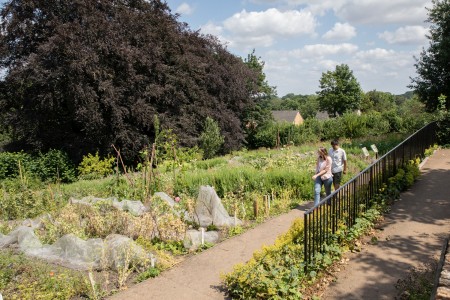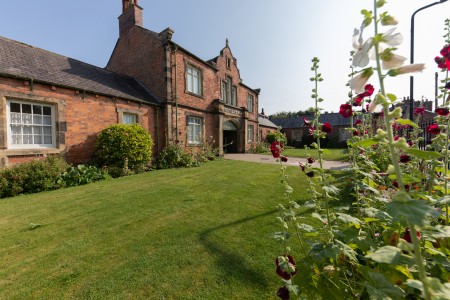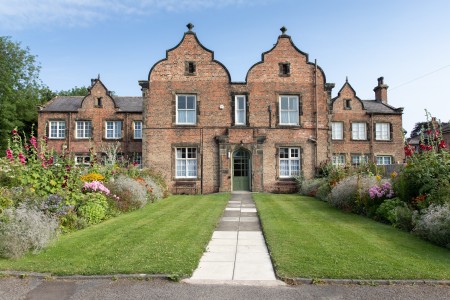Your basket is currently empty!
Workhouse Gardens
There are very few surviving workhouse gardens left today. That is why the gardens at Ripon Workhouse Museum have been so carefully restored and brought back into use. They are a highlight of any visit to the museum, with trails and regular activities to help you get involved.
Our gardens are maintained by a team of volunteers who use Victorian horticultural practices but with a 21st century attitude. We are committed to sustainability and to educating the public on how they can make effective changes that help the environment.
Heritage Kitchen Garden

About an acre in size, the garden lies on a slope behind the Workhouse Museum site, with both original and access paths for all visitors to be able to enjoy the variety of vegetables, fruit and herbs that are all sourced from Victorian or older varieties. Being able to see, smell and taste these varieties gives visitors an insight into what Victorian life was really like.
If you’re a keen gardener, you will recognise many of the varieties of fruit and vegetables we grow in our gardens today, as many of the Victorian favourites are still widely available. These include varieties like the ever-popular Bunyard’s Exhibition broad beans, Painted Lady runner beans and the Fellside Hero potato, which was renamed the King Edward upon his coronation in 1902.
We also have a wonderful collection of heritage apple and pear trees. There are many apple trees of local provenance such as Yorkshire Dog Snout, Ribston Pippin and Grandpa Buxton. In the spring, the blossom is beautiful and the apples are a marvellous sight in the autumn,
when they are harvested and made into juice, which is sold in the shop.
There are also a number of Victorian rhubarb varieties, including Prince Albert, Victoria and Hawke’s Champagne.
Front Garden

As you enter the museum, take note of the carefully maintained gardens either side of the path. Our team of volunteers bring the Workhouse entrance life with Victorian varieties of plants and flowers to set the scene for your visit. Enjoy the scent from Mrs Sinkin’s pinks – a fragrant variety bred by the Master of the Workhouse in Slough and much admired by Queen Victoria. We also grow heritage sweet peas including Matucana and Painted Lady.
Master and Matron’s Garden

A theme that will become clear in your visit to the Workhouse Museum is the difference between those who have, and those who have not. This is startling apparent as you walk up the path of the Master and Matron’s Garden between the two blocks. In the summer this carefully curated space blooms into an array of pinks, purples, yellows and reds, sitting in direct contrast to the conditions you will discover for the Workhouse inmates. In 2020, a collection of spring bulbs were planted exclusively using varieties that were available in 1890. These provide a lovely display of blousy Greuze and Couleur Cardinal
tulips, to scented white City of Haarlem hyacinths, and miniature Lenten Lily and W.P. Milner narcissi.
These complement a design using perennials that would have been popular amongst Victorian gardeners: hollyhocks, lupins, delphiniums, angelica, gypsophila, asters and helenium. Our aim is to replace all modern varieties with those that can be dated back to the 19th century.
